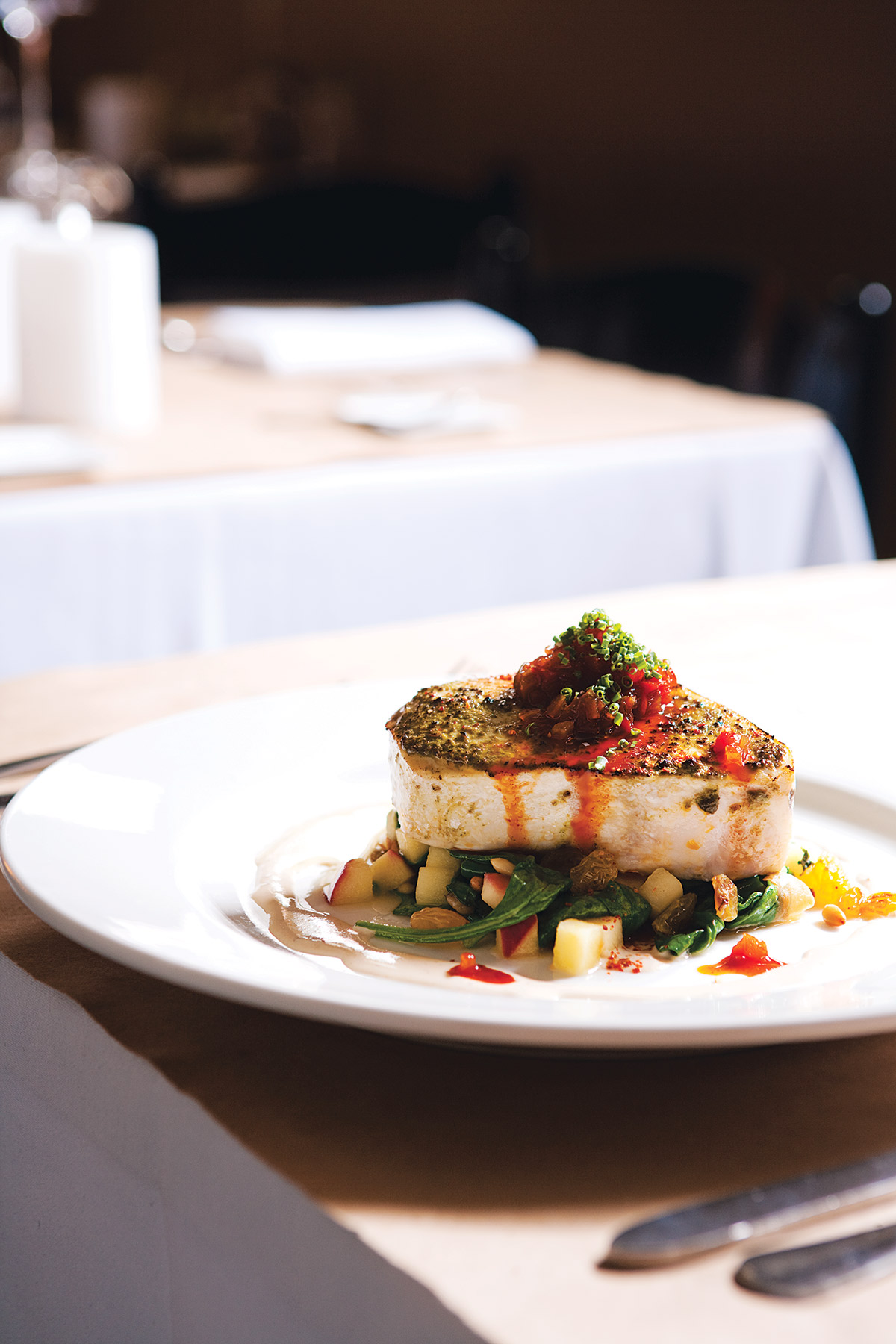Dining Out: Ten Tables Cambridge

Photograph by Keller+Keller
There’s clearly something charmed about the semibasement space at 5 Craigie Circle. It’s where Tony Maws built a national reputation with his Craigie Street Bistrot, and now it’s where a new branch of the tiny Jamaica Plain restaurant Ten Tables has snuggled in as if it’s always been there.
A second location is often a bad idea—especially when, as in this case, it confusingly uses the same name and is double the size of the original. But just a few months after repainting the Cambridge space in earth tones, installing neat blown-glass hanging lights, and putting kraft paper on the tables instead of white cloths, chef-owner David Punch and co-owner Krista Kranyak have achieved a smooth operation. As with the old Craigie Street, the room can get noisy, and the generally warm service still has a few dropped-ball glitches. But the food does not.
In fact, there are already some great dishes at Ten Tables that give life to the “fresh-local-seasonal” concept (and at good prices, too). There are two in particular, one an appetizer and one a main. And it’s the latter I can’t stop thinking about. Everything about the broiled Moroccan swordfish ($24) is right—there’s spice, salt, and sweetness, all in balance. The generous plank of fish is rubbed with harissa and cilantro; it’s moist, though cooked through (or at least it was after I sent it back, since I feel about translucent swordfish the way most people feel about translucent chicken). I could have made a meal of the accompanying spinach with toasted garlic, pine nuts, golden raisins, and apple, except that it’s so perfect with the fish. And a drizzle of red pepper jam with smoked paprika and honey plays out the full spice-sweet balance. It’s a recipe I immediately wanted to try at home.
The appetizer, like the swordfish, has a flavor as pure as a clear stream: green garlic and semolina soup ($9), a wonderfully rich chicken broth infused with a sachet of herbs and poured over raw spinach. “The world’s thinnest polenta,” Punch calls it (cute, even if semolina is hard-wheat flour, not cornmeal); the milky opacity makes it look like a cream or at least potato-based soup. It’s an idea he took from Alice Waters’s The Art of Simple Food, he says, and he makes it even better by floating in it a six-minute egg infused with olive oil.
Some of the dishes miss the mark, and there’s a little stodginess, too. Ricotta cavatelli ($18) was the most disappointing main course, a huge soupy portion and terribly monotonous, with chunks of maitake mushrooms too closely mimicking the sea of little shell-shaped dumplings (which themselves were good and nicely springy). Skillet-roasted Giannone chicken ($19) had fine flavor, but the morel sauce was too creamy for my taste and a bit bland, and the “pilaf” of farro and red rice was gummy, as red rice tends to be. An appetizer of salmon rillettes ($11) struck me as oily and dull—like tuna salad made with some unidentifiable bland fish under a pond ice–thick layer of congealed clarified butter. But guests at one meal fought over it, demanding more slices of toasted Iggy’s brioche on which to spread the last bit of buttery chopped fish.
Most other dishes won uniform praise. Waters’s influence appears again in a salad of butter lettuce with breakfast radishes, new peas, and goat cheese croutons ($8), an echo of the baked–goat cheese salad she made famous at Chez Panisse. It would make an ideal palate-cleanser after a main course; this being America, it’s an appetizer.
Every chef is getting humanely raised Berkshire pork these days, but a starter of chorizo sausage with cannellini beans ($10) demonstrates that how you treat the meat is as important as how you treat the pig. It’s the epitome of pork flavor, the meat spiced with such a sure hand it occurred to me that sausage-blending might be as fundamental a technique as, say, the right touch when making biscuits. The beans are spiked with the same Basque chili, piment d’Espelette, that flavors the sausage, and a scattering of snipped green herbs continues the emphasis on pure flavor. In fact, I would return just on a pork pilgrimage. The huge main-course pork chop ($23) is unbrined—a trend I hope other chefs will follow, because the meat remains beautifully tender and moist without becoming spongy—and served with a Madeira jus, an old-fashioned reduced sauce that Punch makes a strong case for reviving. Next time you’re tempted to spend $45 on a veal chop, come here and try the pork chop for half the price.
Like the restaurant itself, the desserts (all $8) have no business being so good so soon. Punch hired his friend Alison Hearn, whose desserts I admired at Myers + Chang, as pastry chef, unusual for such a small place (and perhaps an example of where two restaurants can be an advantage). Sticky toffee pudding is the kind of stodginess I can get behind if it’s as richly flavored (and fully cooked—this is a fad dessert often served doughy, leaden, and undercaramelized) as this one. Fans of the J.P. location will be relieved that the chocolate terrine with sea salt and Thai basil ice cream is on the menu here; it’s excellent, but look for seasonal specials that carry through the menu’s theme, like local strawberries with Muscat sabayon and crushed amaretti. Like almost everything here, they’re delicate but substantial, seasonal but timeless.

